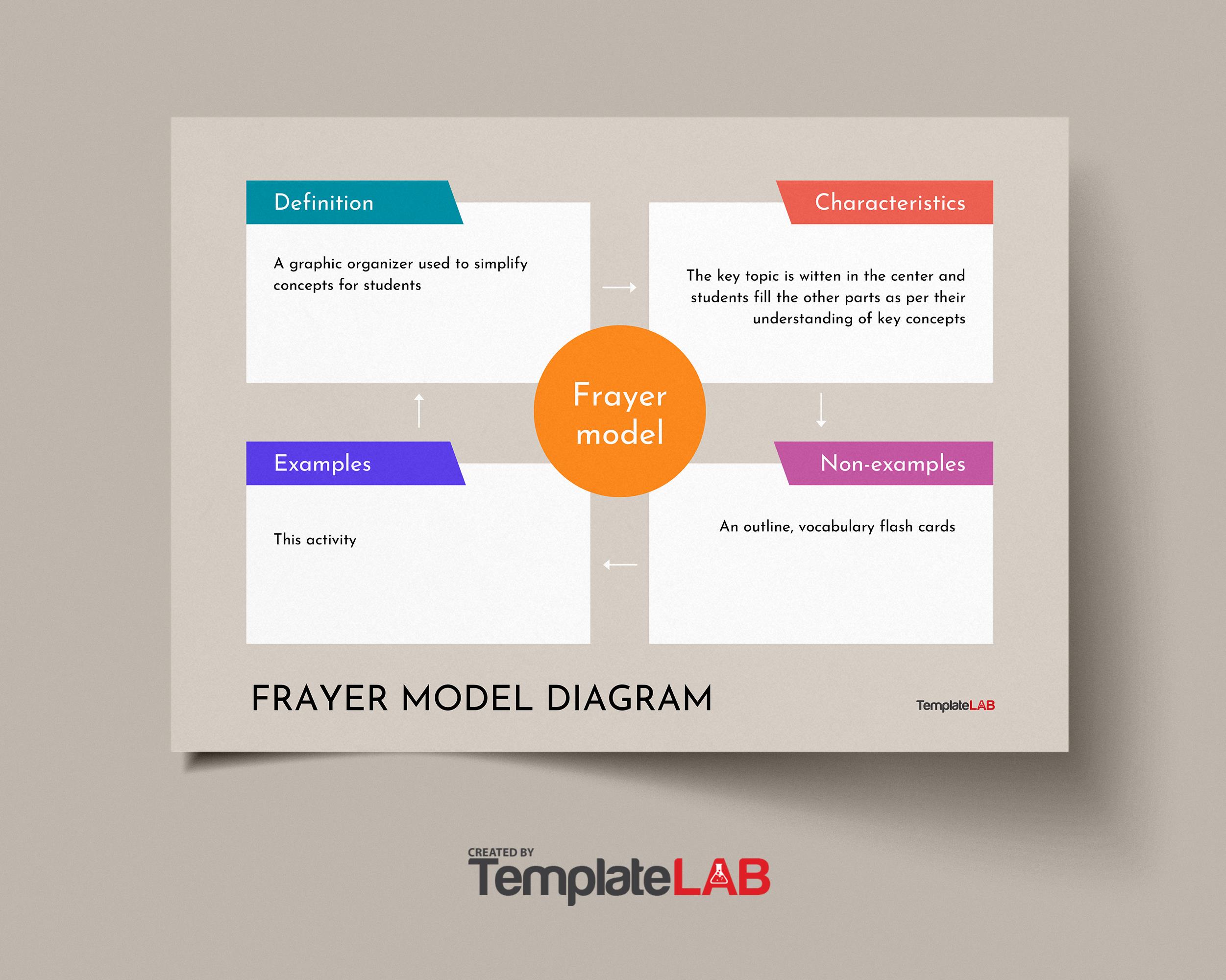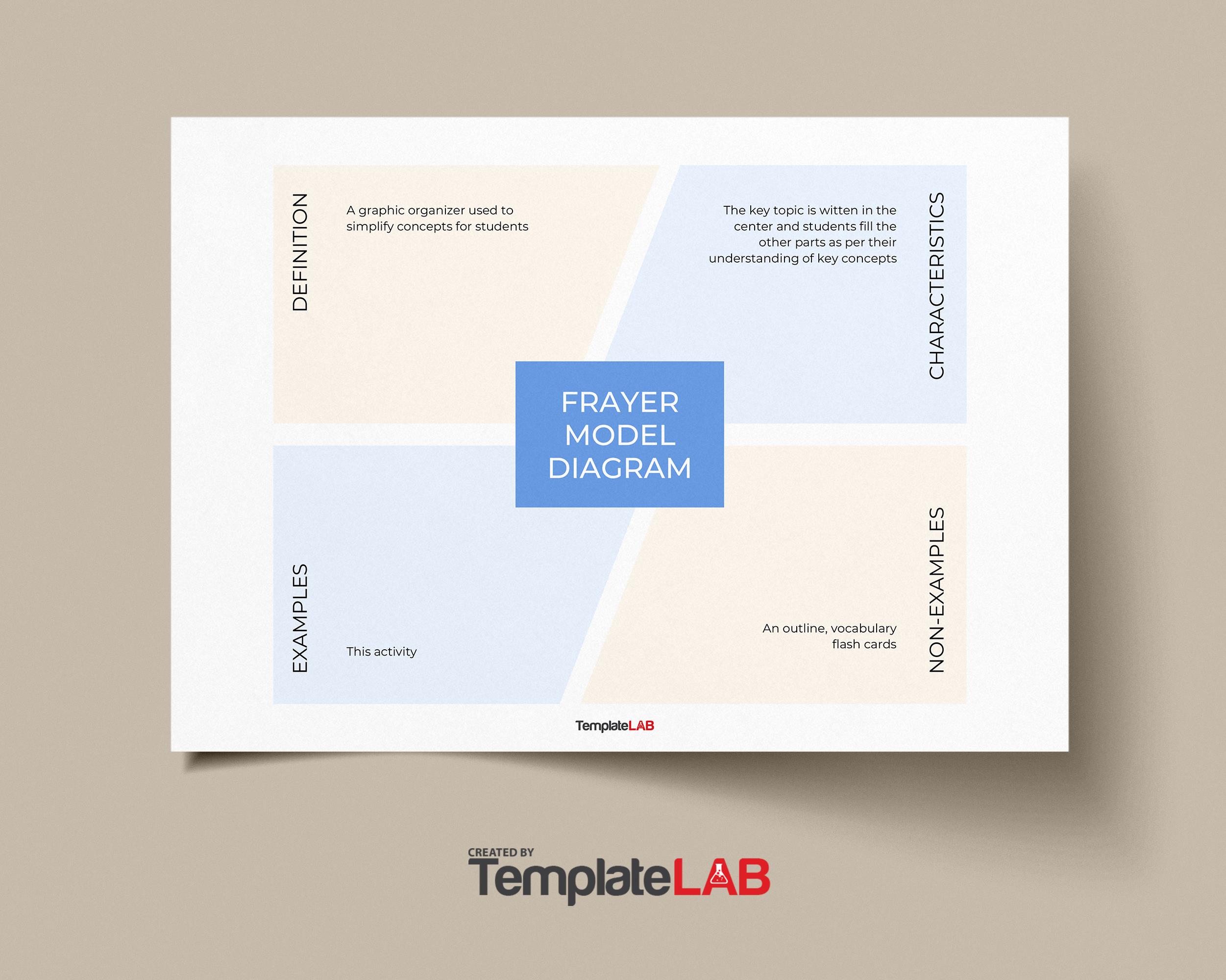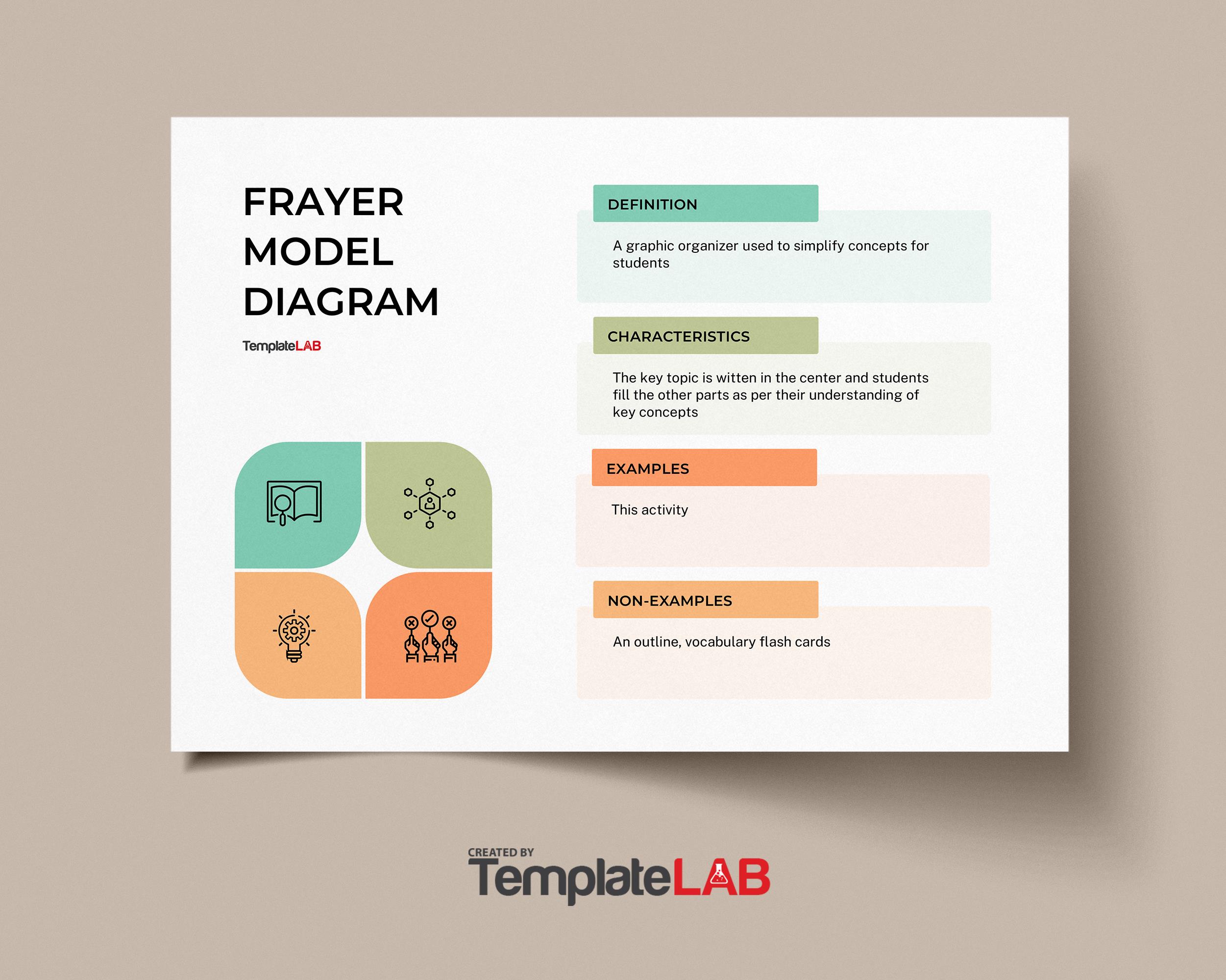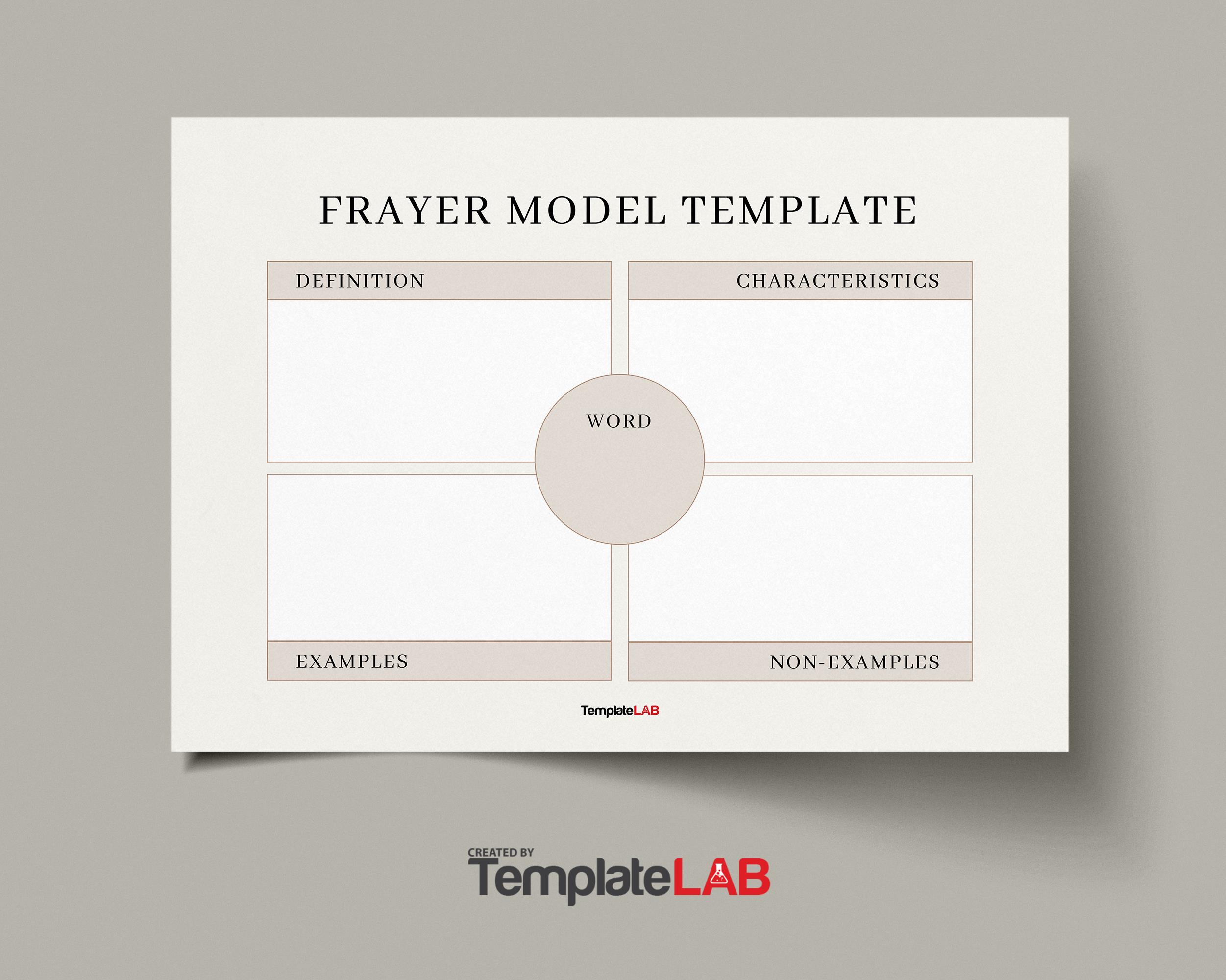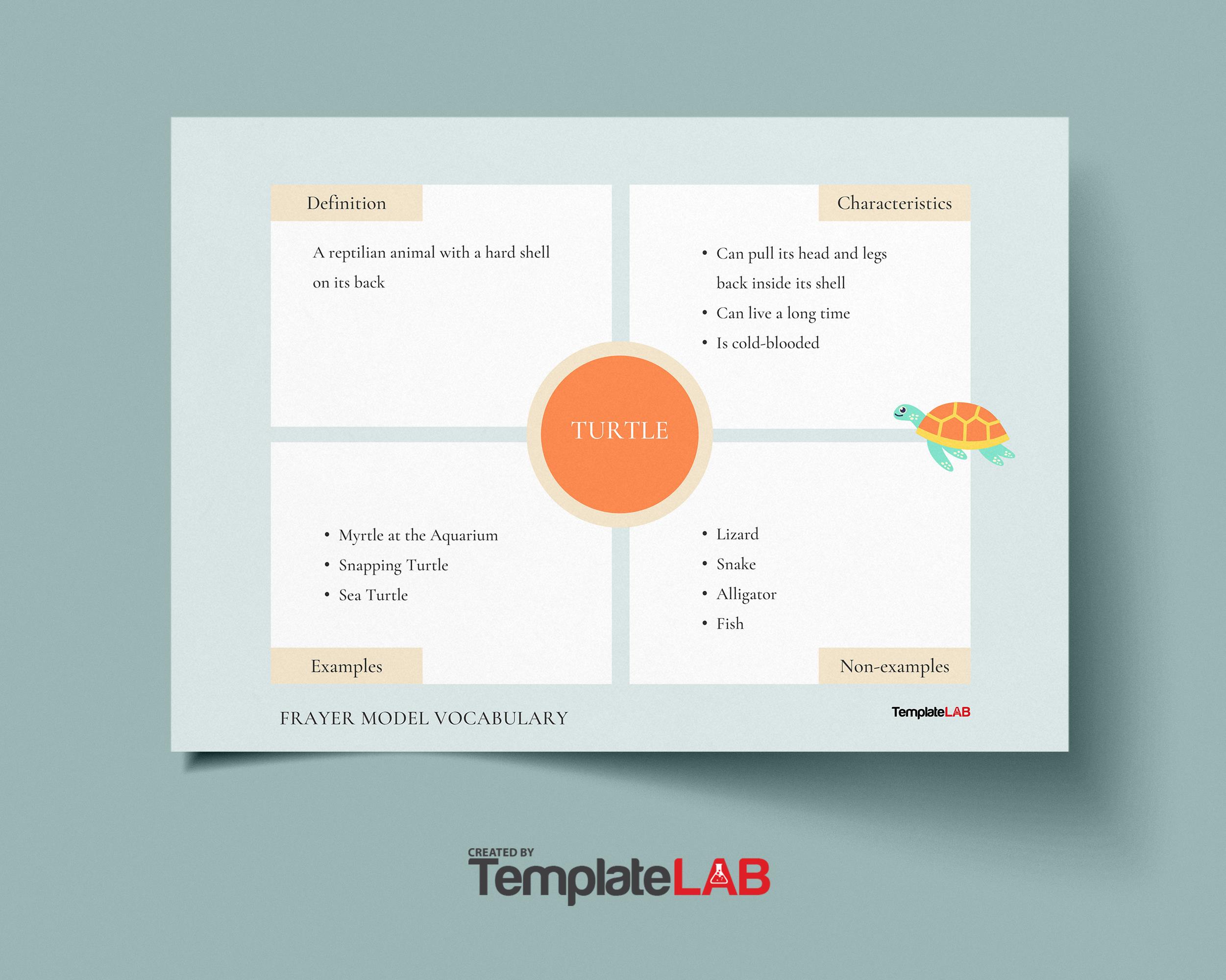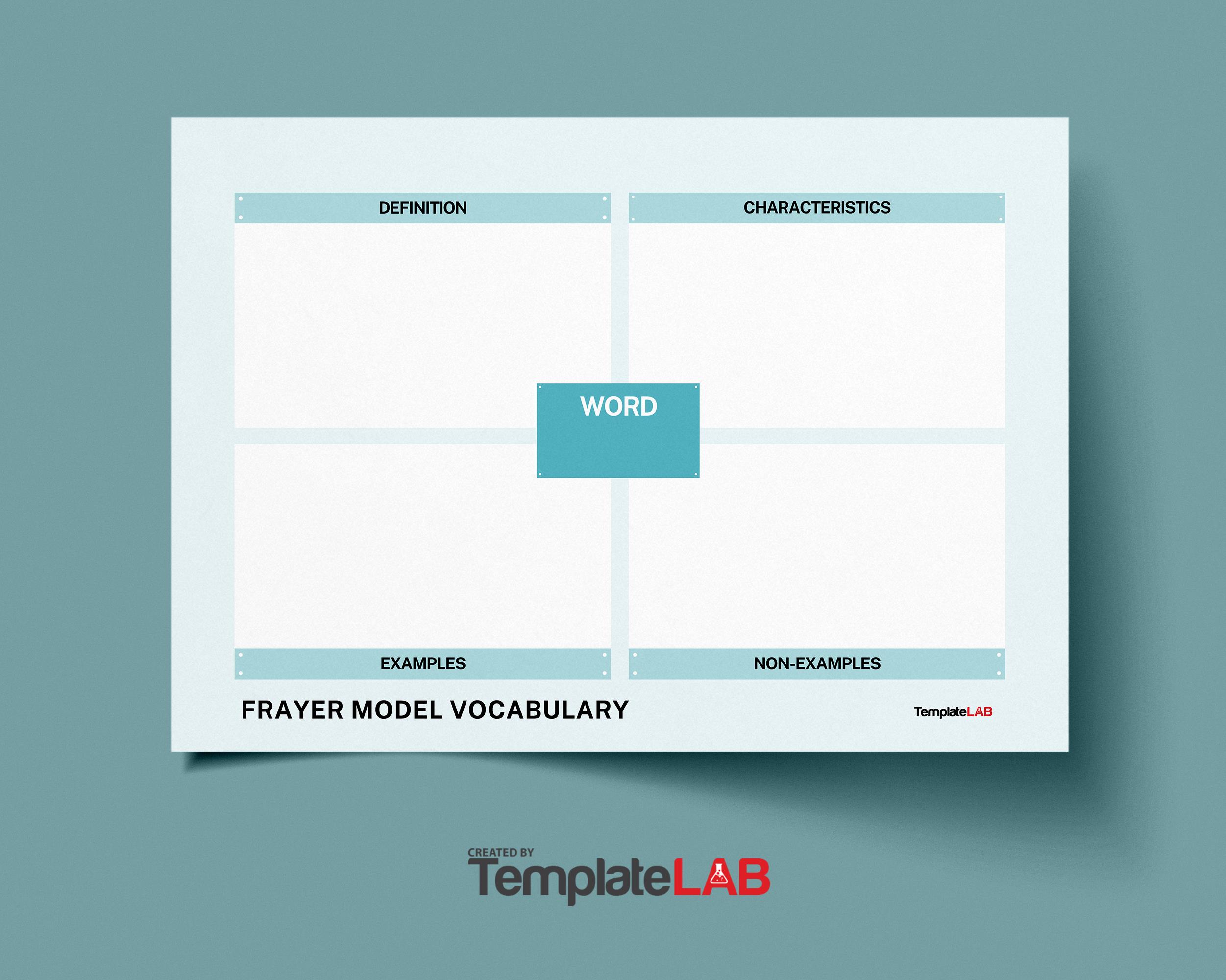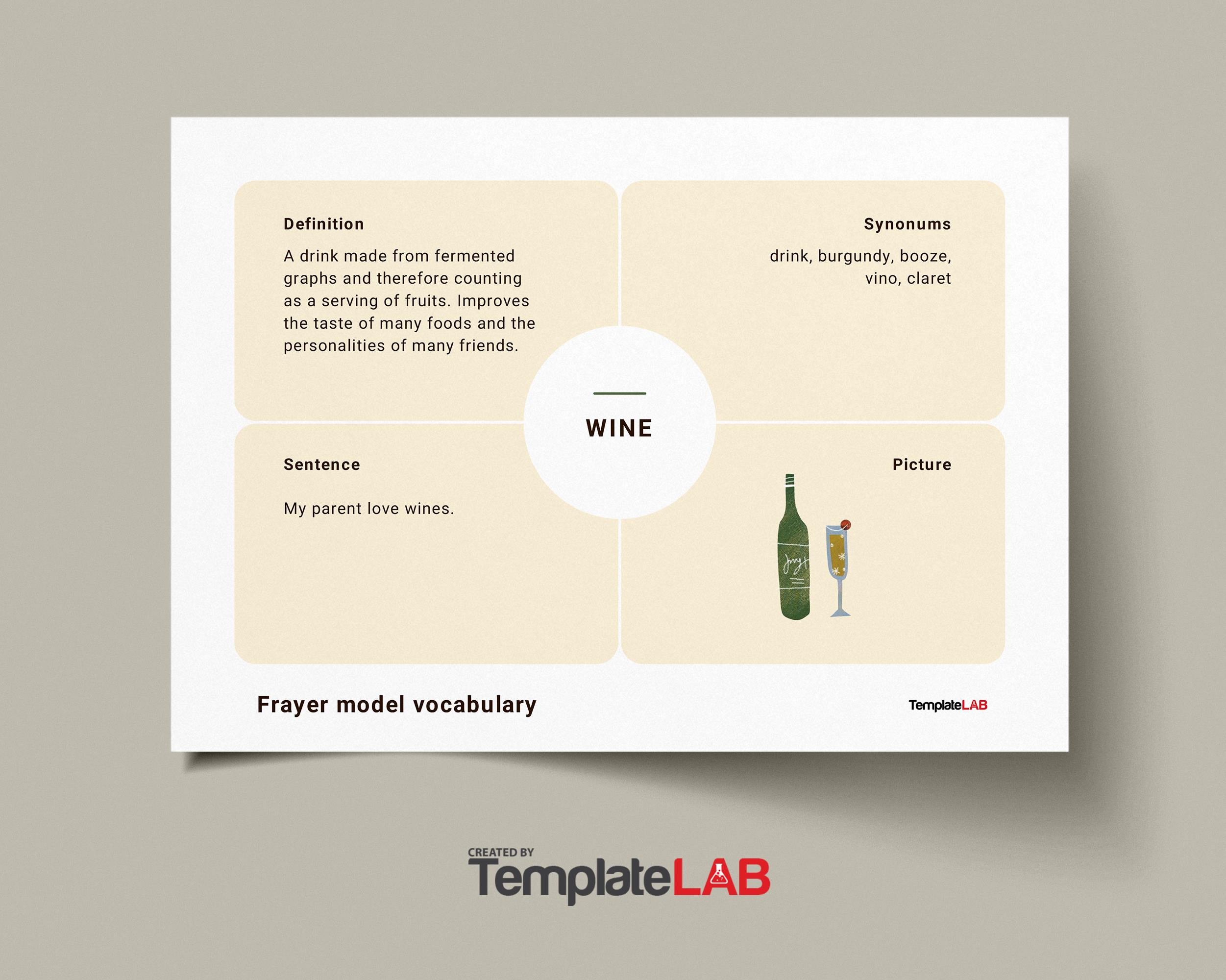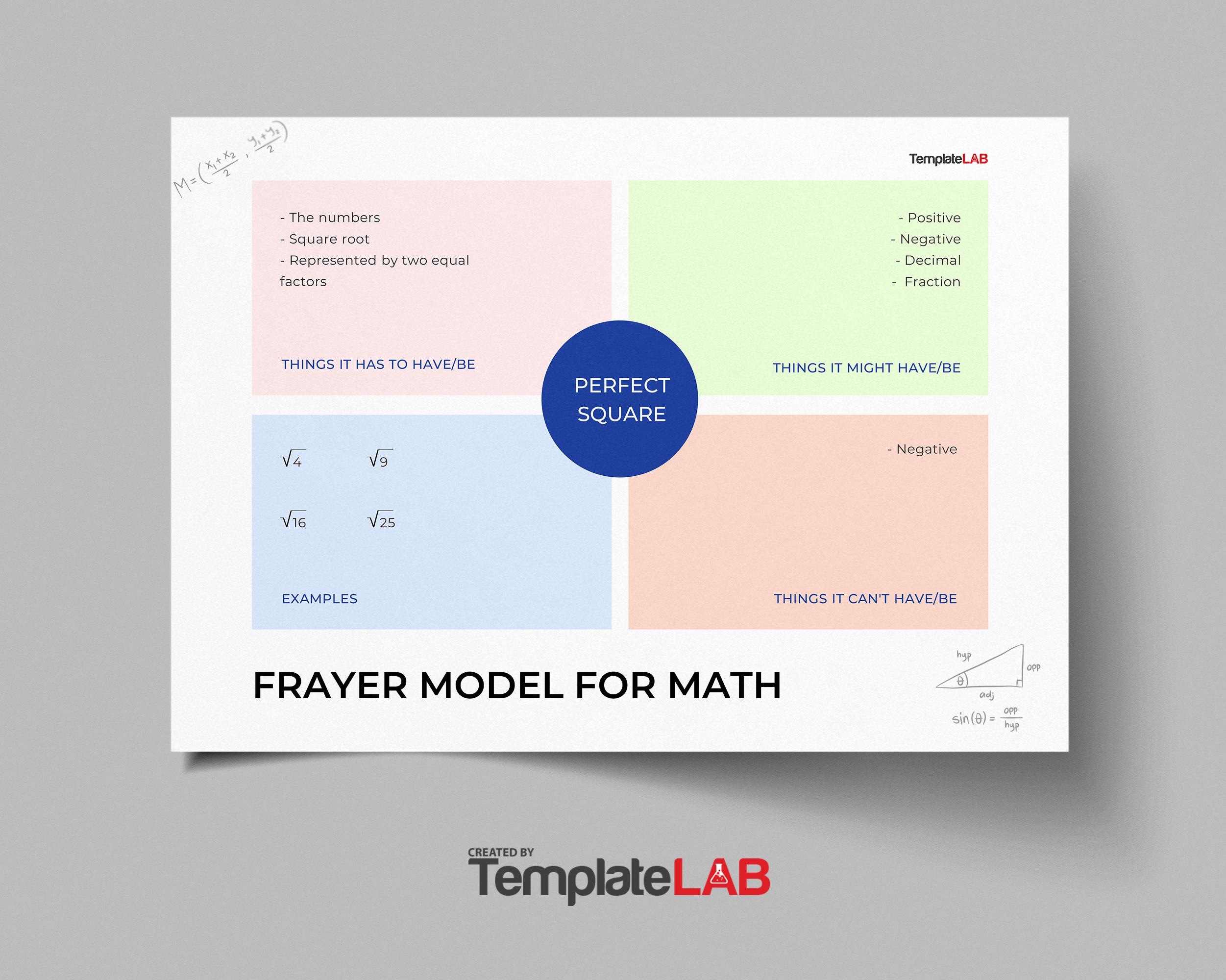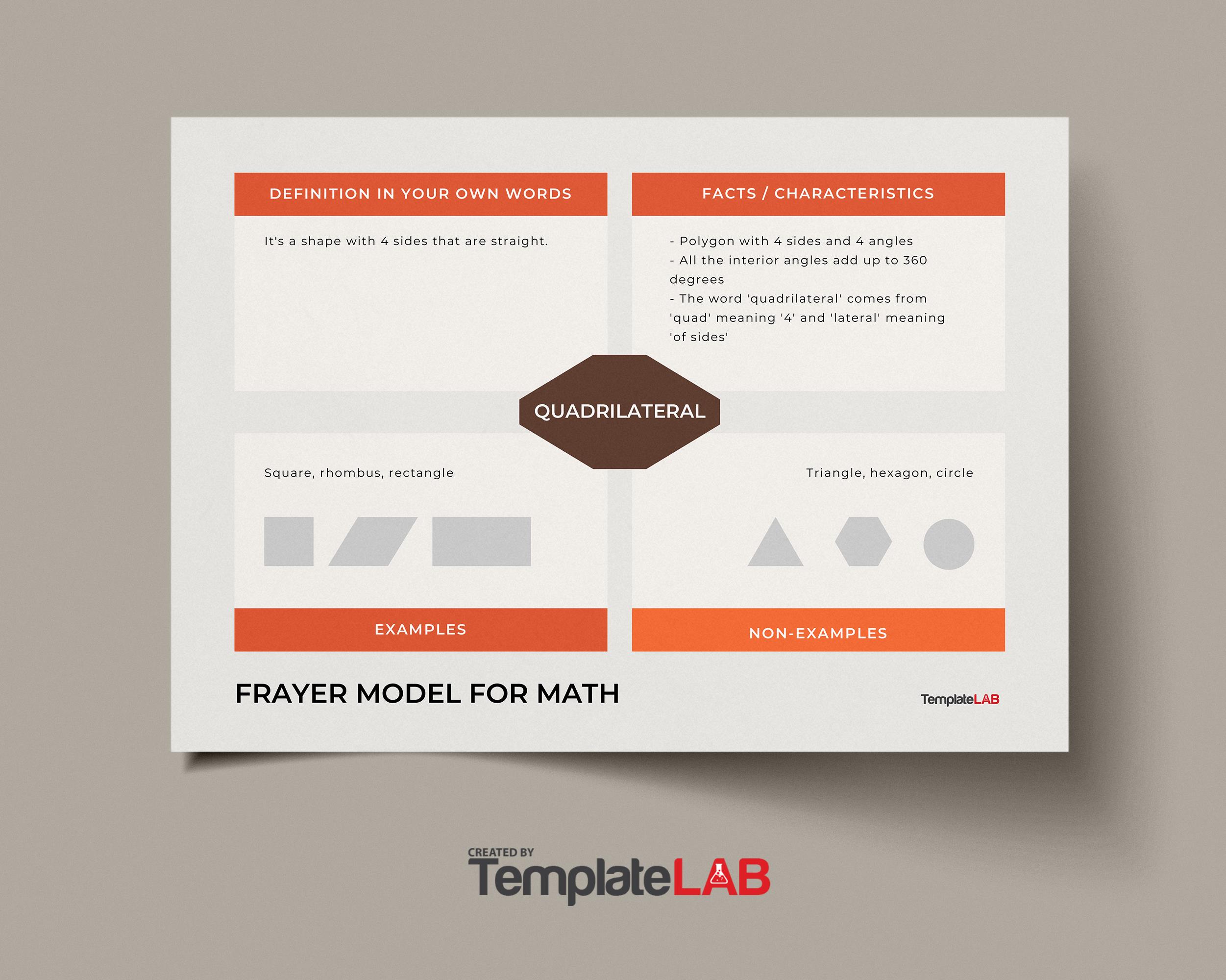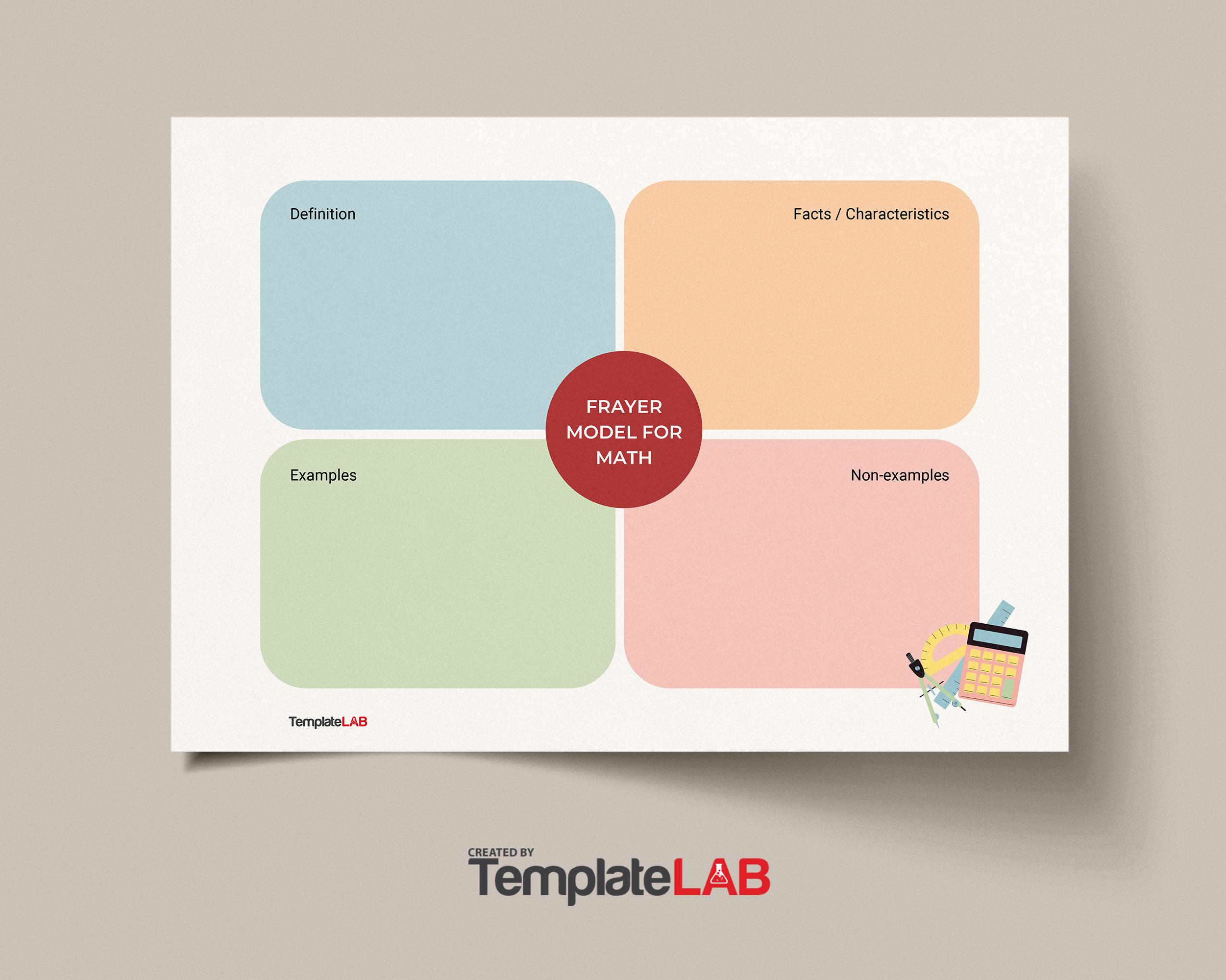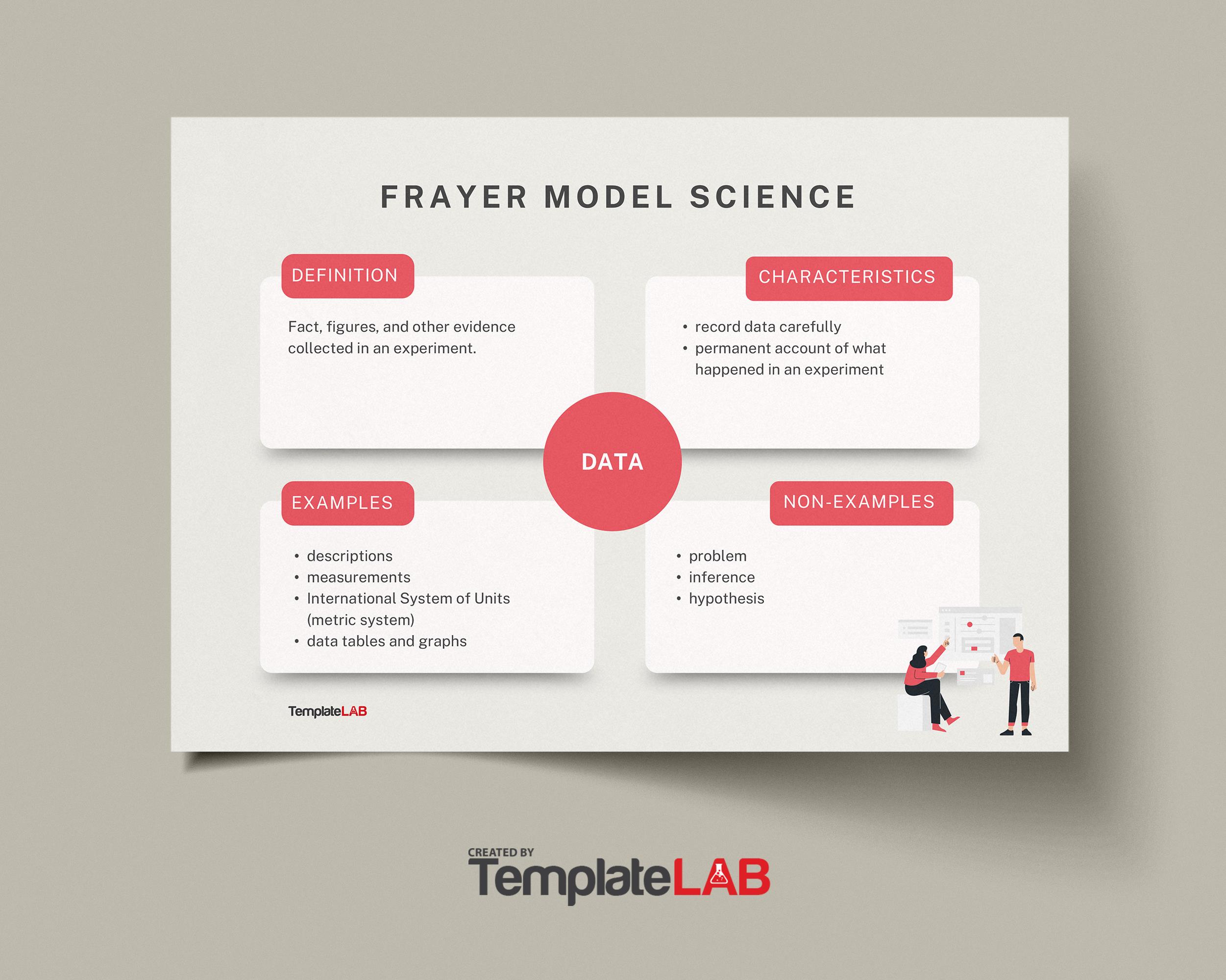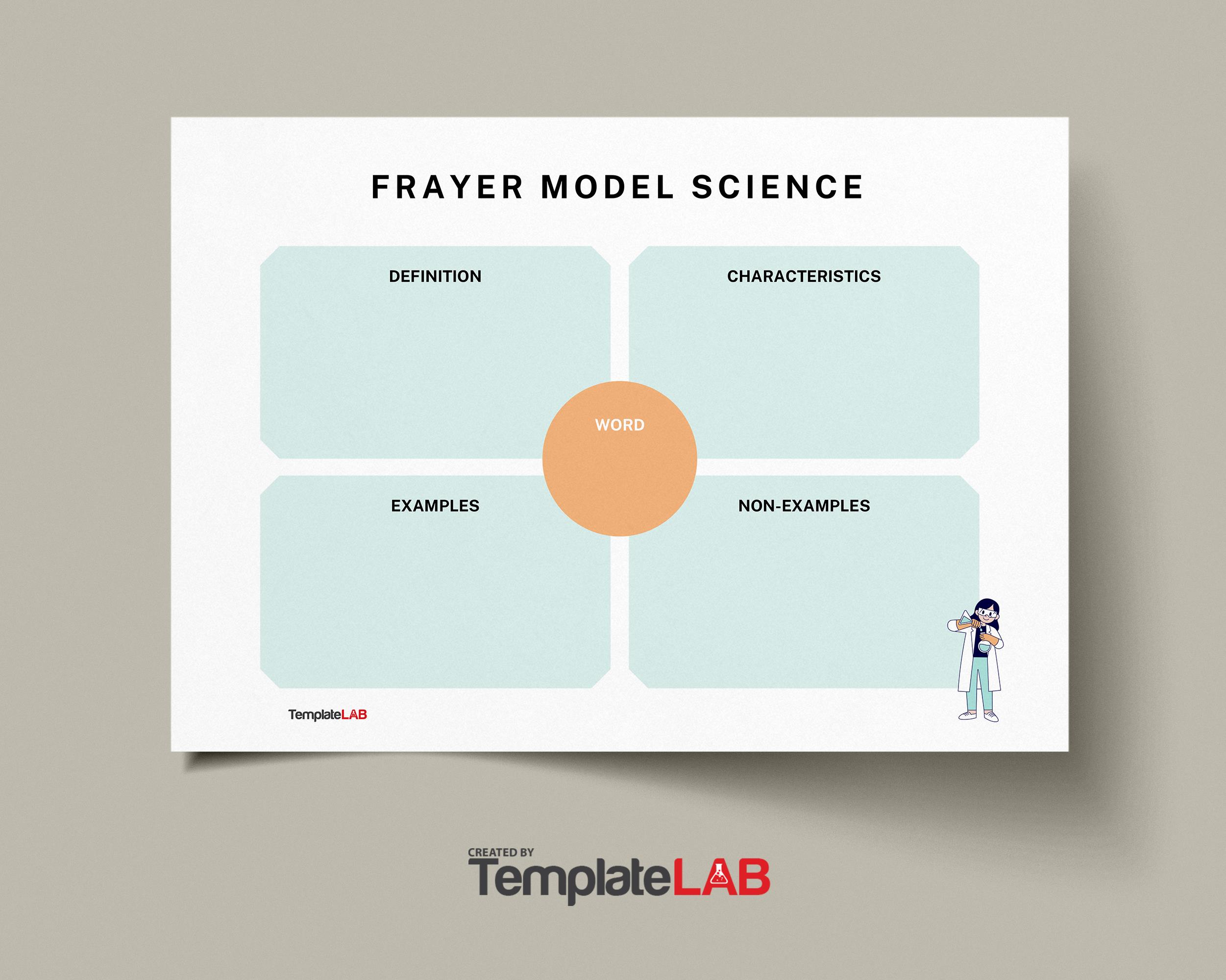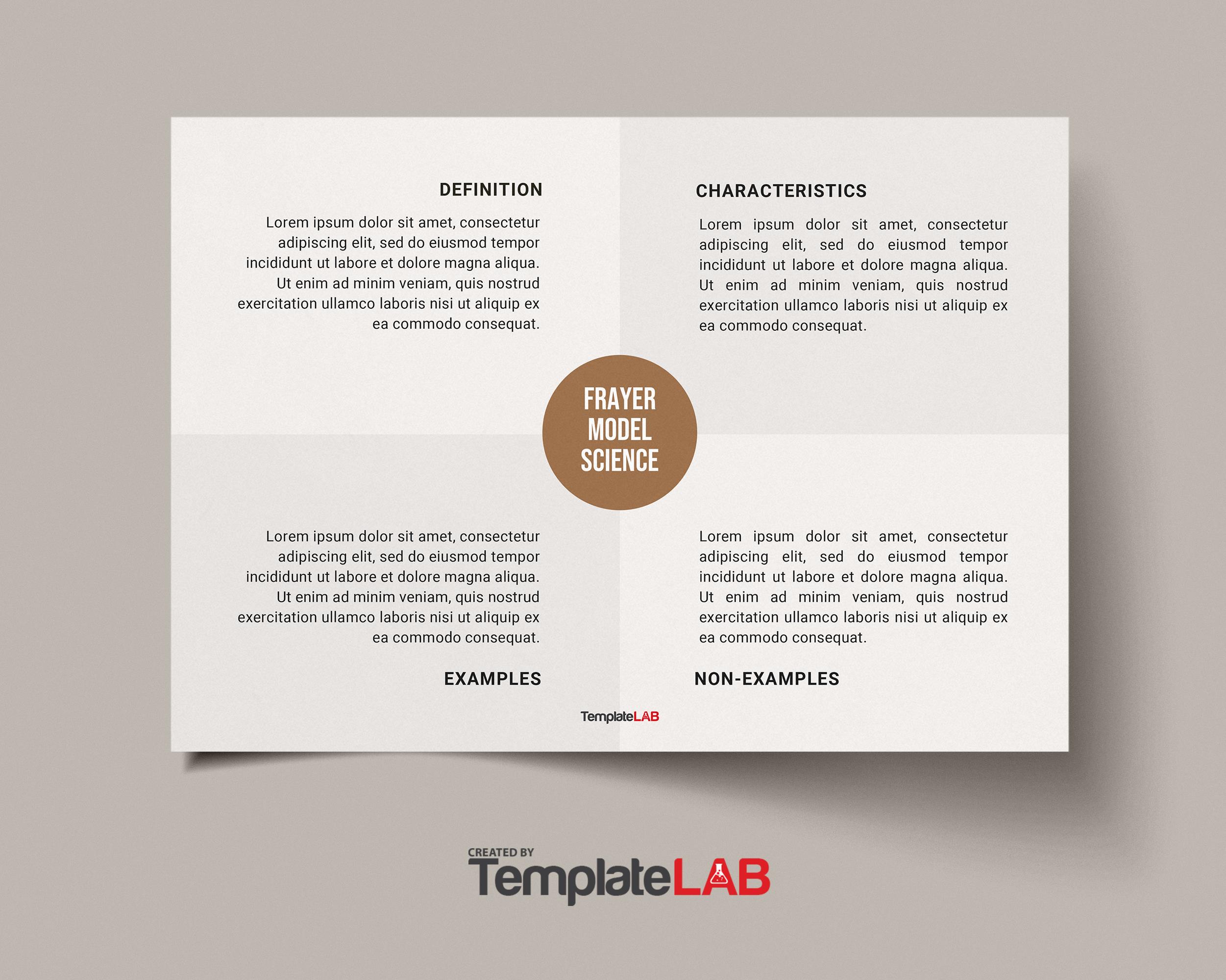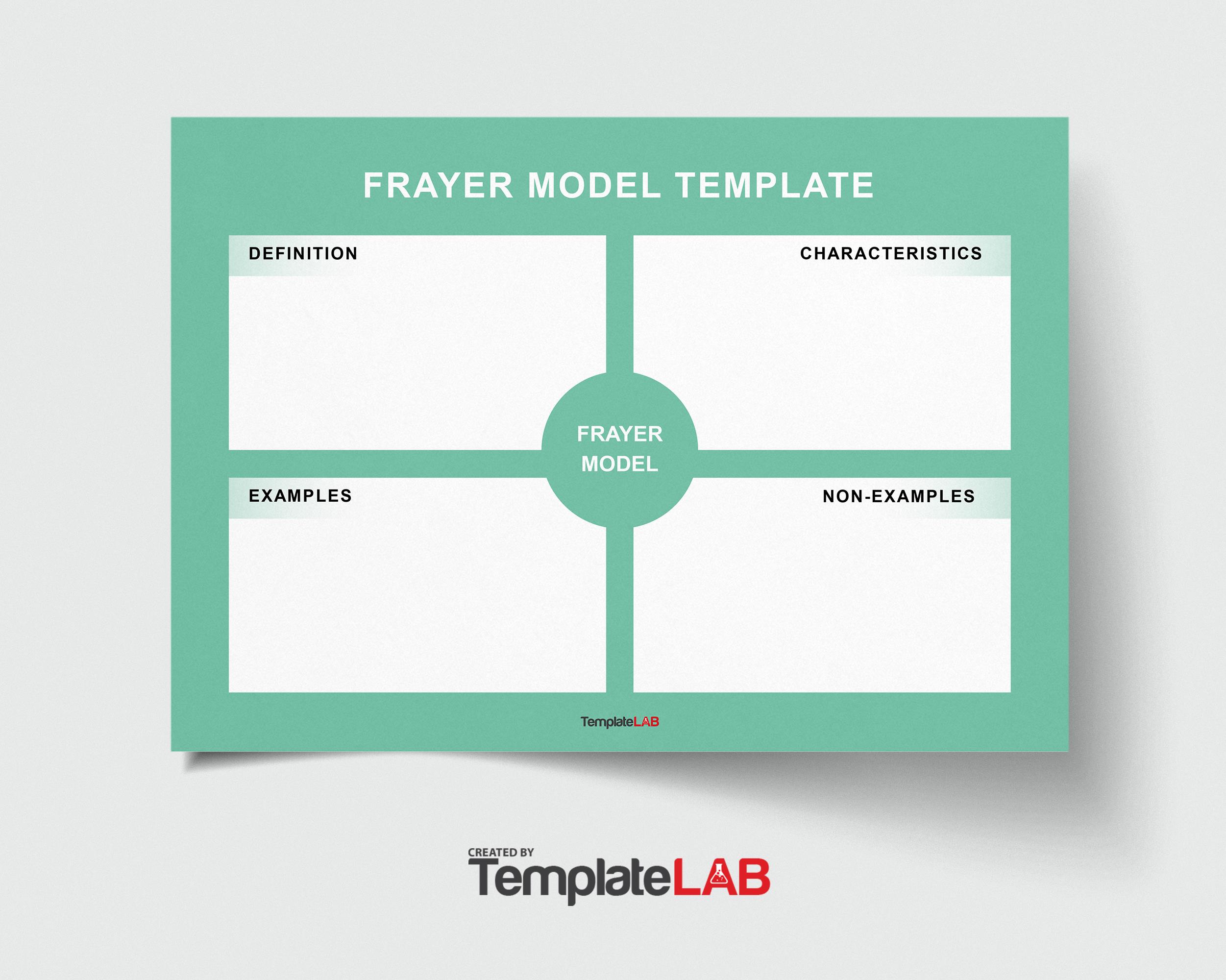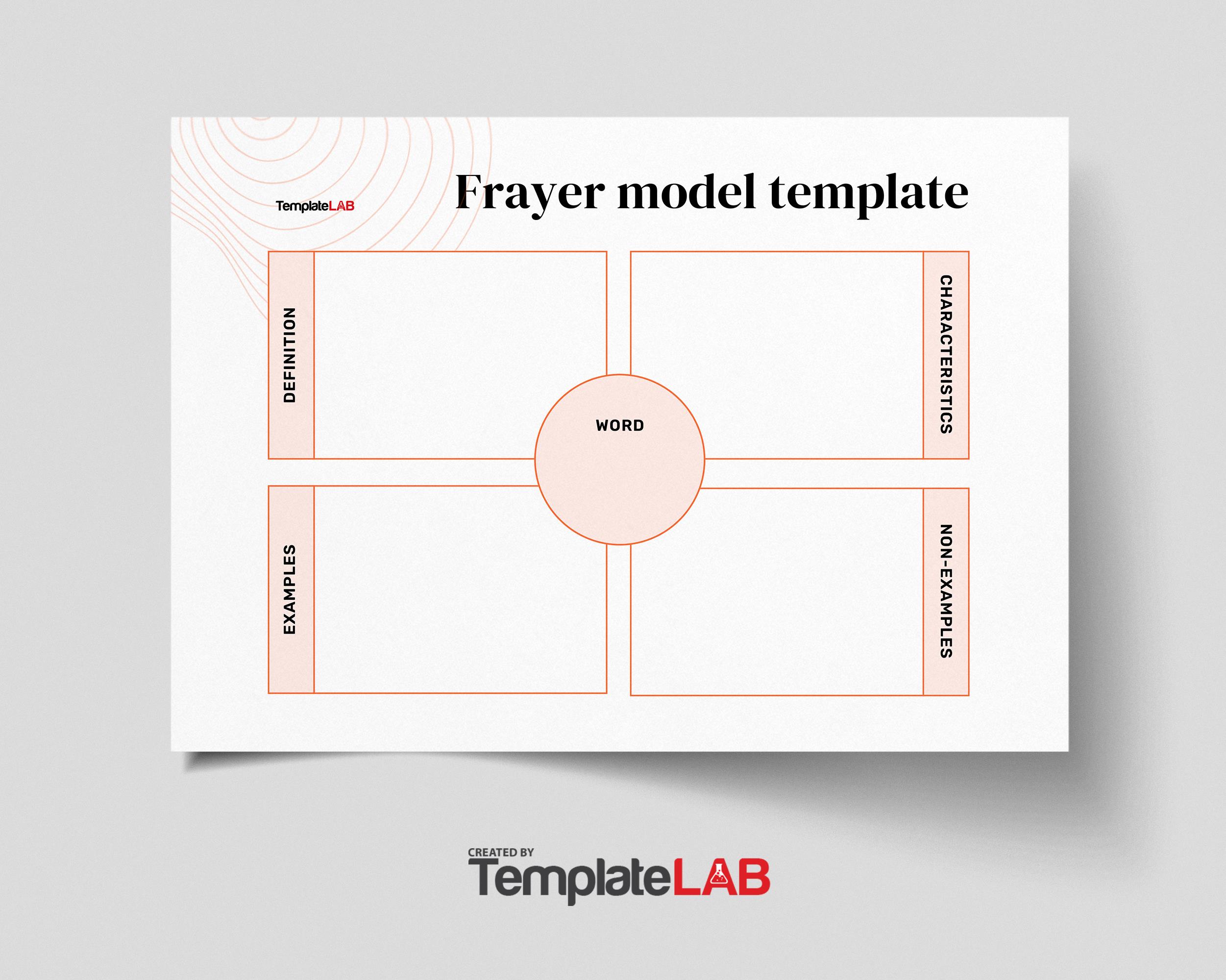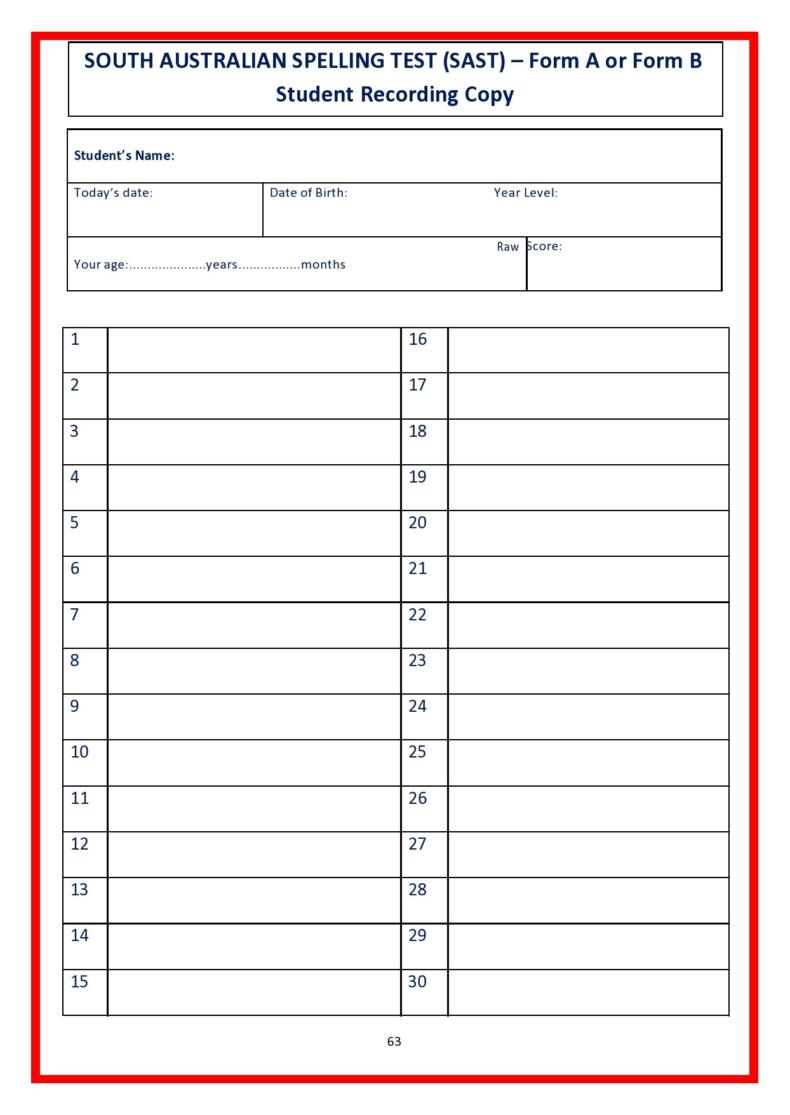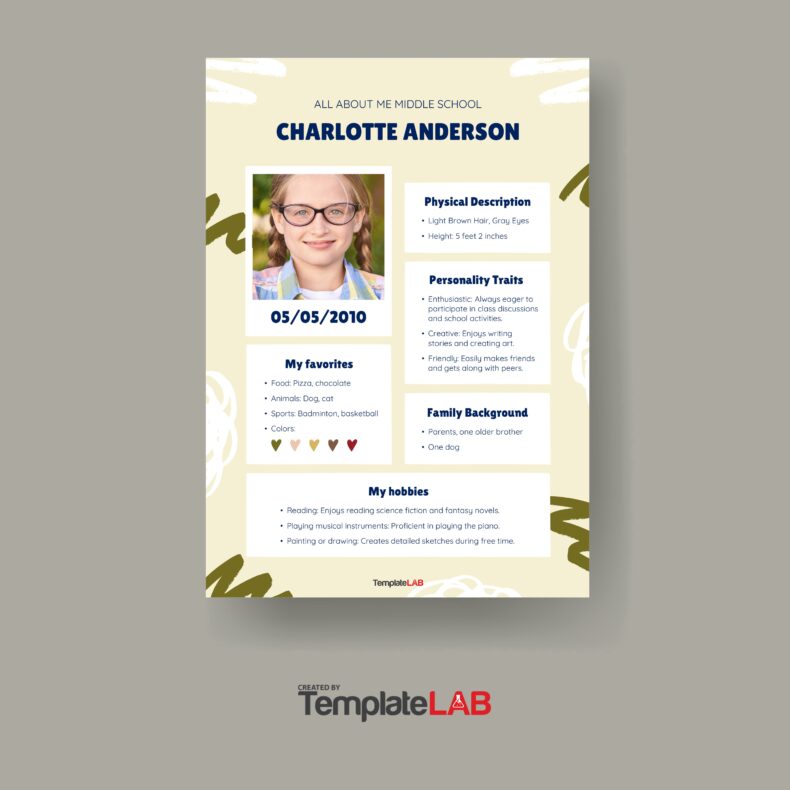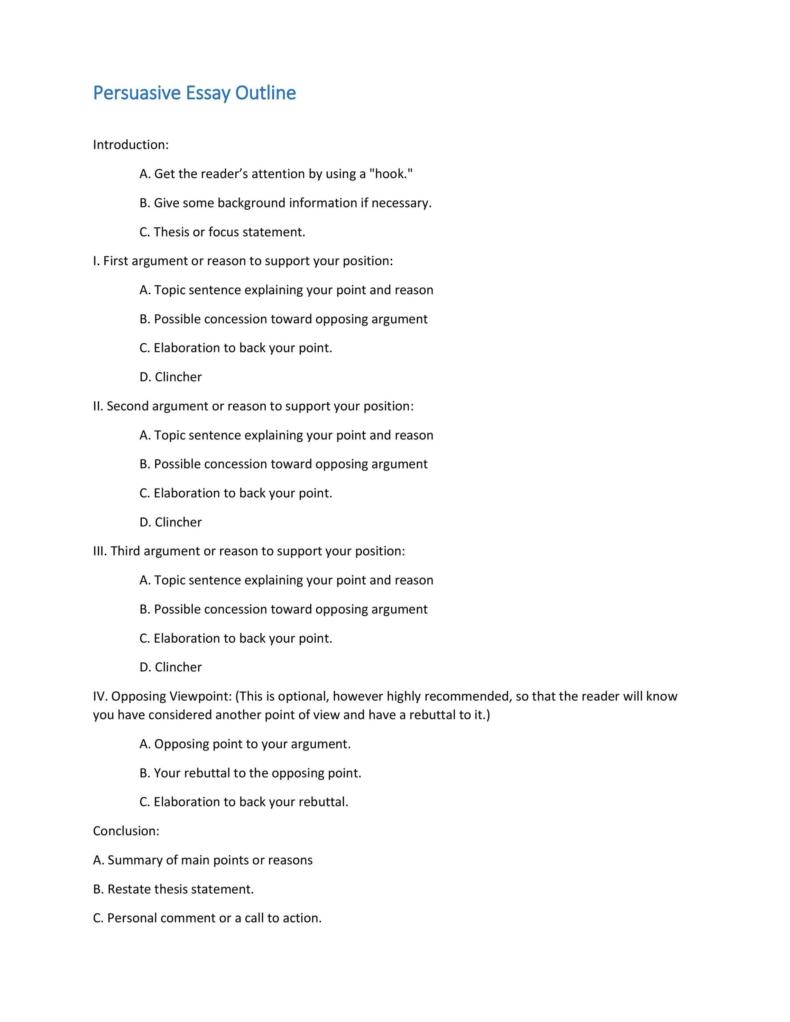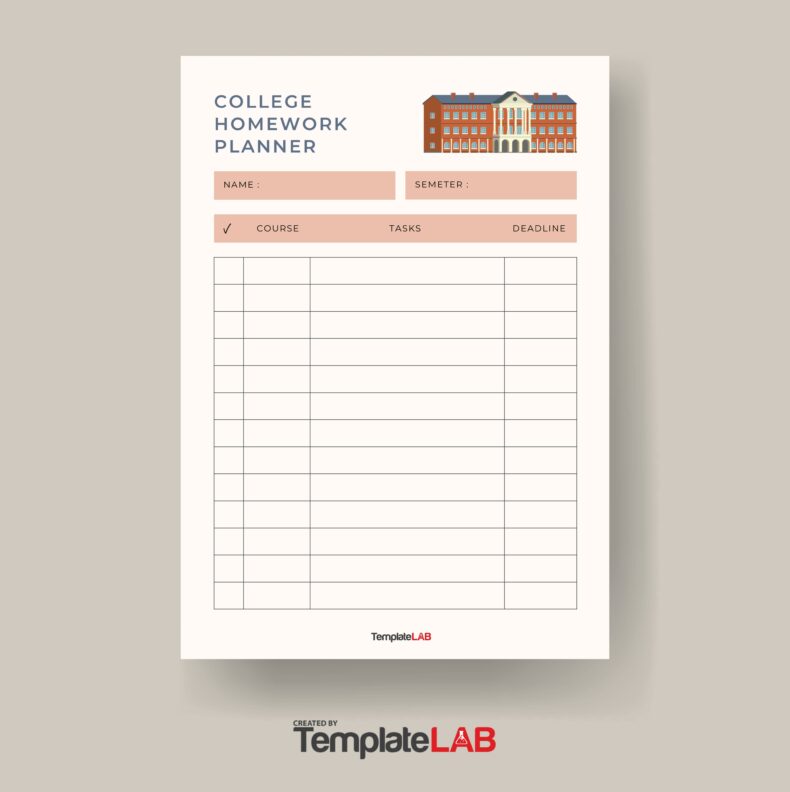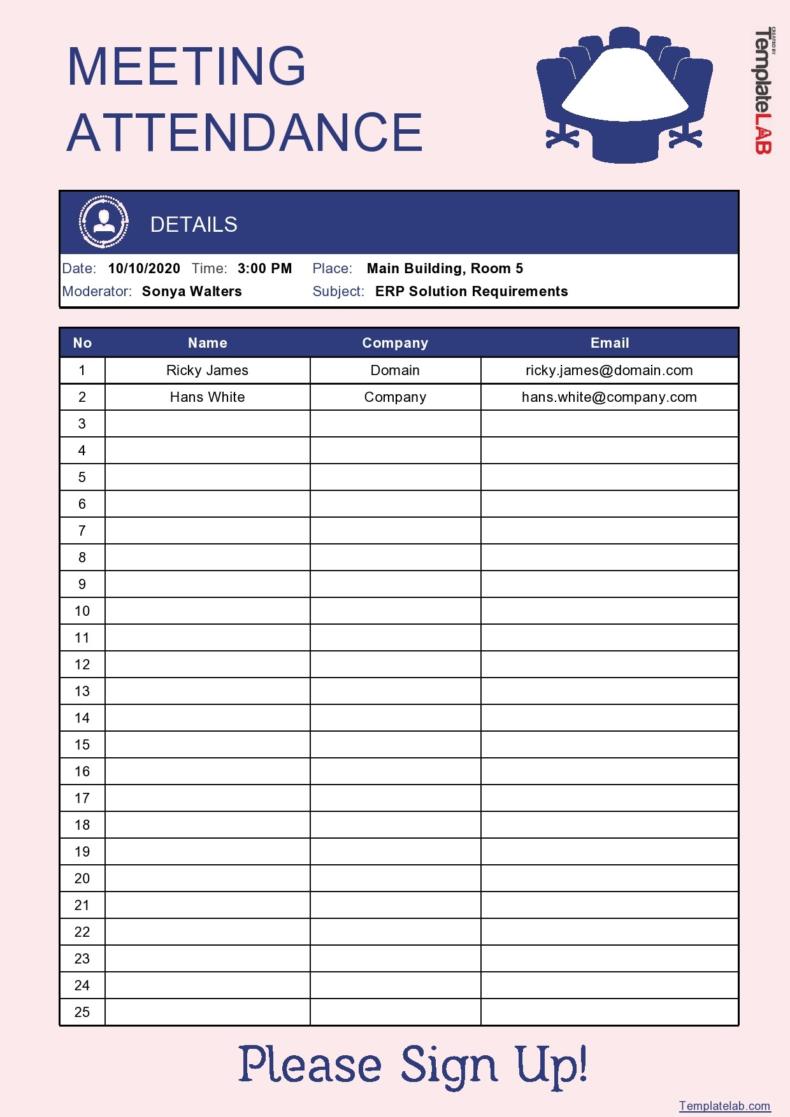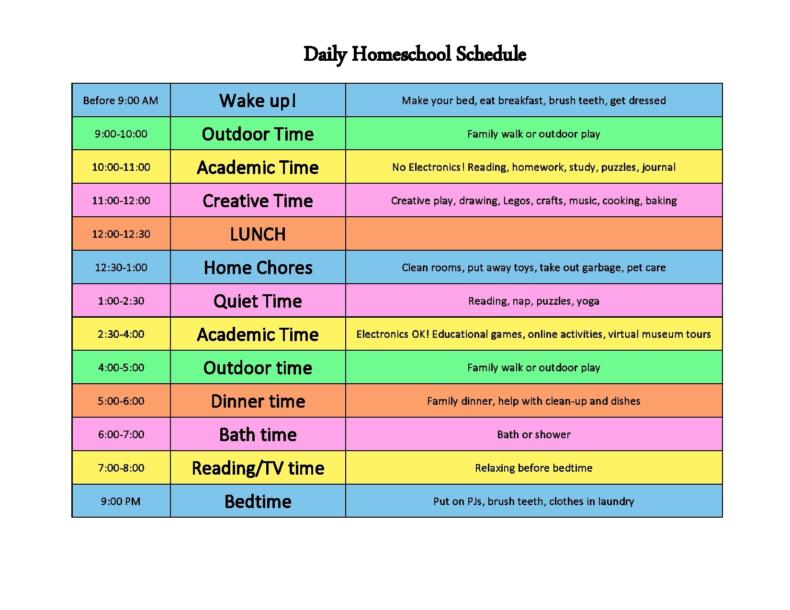Learning new vocabulary is an essential skill for students, and using a Frayer Model is an excellent way to build vocabulary effectively. A Frayer Model template is a graphic organizer designed to help students learn new vocabulary words or concepts using examples and non-examples.
This form of language learning is suitable for any age, and teachers can definitely benefit from using Frayer Model templates in the classroom. The Frayer Model graphic organizer can help students to apply their knowledge of a concept or word and thus embed it into their everyday vocabulary usage. The Frayer Model template can be used across a range of subjects to help students develop their vocabulary.
Table of Contents
- 1 Frayer Model Templates
- 2 What is a Frayer Model?
- 3 Frayer Model Examples
- 4 When to Use a Frayer Model
- 5 Features of a Frayer Model Template
- 6 Printable Frayer Models
- 7 Benefits of Using a Frayer Model
- 8 How to Create a Frayer Model
- 9 Download and Print an Editable Frayer Model Template to Improve Student Vocabulary
Whether you’re a teacher or a student, we provide a range of Frayer Model templates for you to download and print to begin using this fantastic technique for vocabulary learning.
Frayer Model Templates
What is a Frayer Model?
While there are many different approaches to learning vocabulary, the Frayer Model is original in that the student must apply their newly-acquired knowledge of the word by providing a visual representation of it through examples and non-examples. This is done using a simple divided layout on the page. The target word or concept will be in the middle of the page. Then, the Frayer Model template is typically split into four sections: definitions, characteristics, examples, and non-examples.
These sections in Frayer Models allow students to develop a deeper understanding of a word or concept, as they have to read the word within context and identify its characteristics to develop their knowledge of its meaning. Learning a definition of the word and rewriting this in their own words is an effective way for students to embed this new vocabulary into their minds. Using the four sections can also help students link their prior knowledge of a word or concept to their new knowledge, enabling them to build relationships between their prior and current knowledge.
Frayer Model Examples
When to Use a Frayer Model
Teachers can benefit from using Frayer Model templates with their students, particularly during specific points within a syllabus.
- Before Reading
For example, Frayer Models can be used before reading a text, to activate students’ prior knowledge about a word or concept related to that text. Asking students for a definition of a word can help teachers to assess understanding and adapt their future lessons as necessary. Not only is this a great way to assess students’ understanding, but using a Frayer Model template can also help to engage students in a story or text before they even read it. Students may feel more comfortable reading a difficult text if they already have some understanding of keywords or concepts. - During Reading
Frayer Models are a highly useful resource for students to use during their reading of a text. Using the Frayer Model template during reading, particularly the reading of a novel or non-fiction text, can help students to monitor their vocabulary and also build up their knowledge of any new vocabulary words that they acquire during the reading.
During the reading of a text, students can benefit from using a Frayer Model template to help improve their vocabulary. They can apply their understanding of unfamiliar words or concepts to new language, and the template also encourages them to research and define the target word or concept in more detail. - After Reading
A Frayer Model is essential to vocabulary learning once students have finished their reading. It helps both students and teachers to assess the level of understanding of the target words or complex concepts.
Using Frayer Model templates at this point can also help to establish an overall understanding of the text itself. If you’re a teacher, you can challenge students on their understanding of words or concepts by asking them to identify examples or non-examples related to the text itself. You can use the Frayer Model template in this way as assigned homework, or even as a warm-up introduction to a lesson reflecting on the novel’s themes and ideas. Students can also work in small groups to create a definition of the word and provide examples together.
Features of a Frayer Model Template
Generally, Frayer Models contain the target vocabulary or concept word in the middle of the page, surrounded by four boxes:
- Definitions. Students must write a sentence in their own words to define what the word or concept means. This definition will form the basis for their Frayer Model and enable them to provide examples that reflect this definition.
- Characteristics. Sometimes called ‘features’ or ‘properties,’ this is a list of features related to the word or concept. There may be essential characteristics of the vocabulary that students should aim to explore through examples.
- Examples. Examples can be given as images, quotes, or simply short sentences demonstrating the word or concept in context.
- Non-Examples. Non-Examples should ideally be shown as common misconceptions about the word or concept, or as something that is opposite to the target idea.
These four sections are a great foundation for starting out with the Frayer Model. Frayer Model templates can be completed by students at most age groups and ability levels when shown a correct demonstration of how to use them. This style of graphic organizer, therefore, gives all learners access to language acquisition in an approachable way.
There are other additional features that you may wish to include in a Frayer Model. This depends on the word or concept that the student is studying, and how much detail you want students to write about the idea.
Additional details can include:
- Sentences or quotations
- Pictures
- Facts
If you are using the Frayer Model template to define ideas in depth, then adding additional detail will help to develop your understanding. For example, when studying a novel or famous historical figure, having a section for important quotations can be useful to refer back to during your studies.
Using pictures can not only make the Frayer Model template look more appealing but also helps to provide a visual reference for study purposes. A facts section, although similar to ‘characteristics,’ is particularly suitable when studying concepts. You can include important facts and dates, as well as fun or unique facts that have aided your understanding of the topic.
Printable Frayer Models
Benefits of Using a Frayer Model
Students can often find learning new vocabulary or concepts to be one of the most difficult aspects of learning. Frayer Model templates can help greatly with this, and there are many benefits to using them.
- Helps students to determine or clarify the meaning
Although the layout of a Frayer Model template is simple, the critical thinking skills used to complete the template provide a much deeper understanding of vocabulary than if a student were to just write a definition and nothing else. It allows learners to consider the target word using their own words and prior knowledge.
Frayer Model templates help students to determine the meaning of a word that they may think they know already, or that they are unsure of. Using a Frayer Model template before, during, and after reading is a way for students to understand words in context, which is proven to be one of the best ways to learn and improve language acquisition.
The Frayer Model template also enables students to clarify meaning. Perhaps they are confident about the definition of a word or feel able to use it in context. Completing the Frayer Model template will provide them with clarification of this. They can understand words in even more detail and expand their knowledge of words and concepts that they already know, helping them to progress further in that specific subject. - A Differentiation Technique for Teachers
Teaching a class of students with a range of abilities can be challenging for many teachers. Differentiating resources is one of the easier ways to manage this classroom setting, ensuring that all students are able to access the learning.
The Frayer Model is a brilliant resource to use when considering differentiation in class. It is easy to modify for different abilities, and both teachers and students can edit the template to suit different learning styles.
The Frayer Model stands out amongst other graphic organizers when considering differentiation, as the material in a Frayer Model is presented in a logical way. The use of examples and non-examples helps to make concepts clear to students, emphasizing what the word actually means and providing a space to acknowledge potential misconceptions. The Frayer Model can therefore be adapted to suit all students’ needs and provide them with a rational view of a word or concept.
How to Create a Frayer Model
The Frayer Model template uses a simple, minimalistic layout that makes it easy for anyone to use. You can create a Frayer Model on paper or online, but the process is simple either way.
You may prefer to create a Frayer Model using an online tool, such as Google Slides. Although slightly more time-consuming, creating a Frayer Model using Google Slides or Microsoft PowerPoint can help to give your graphic organizer a sleek and organized look.
However, to make this even easier for you, we have provided a range of free Frayer Model templates for you to download and print. You can customize the Frayer Model template to fit the target word or concept that will be studied.
You can create a Frayer Model using these simple steps:
- Split your page into four sections
Begin by dividing your page into four equal sections. Write the title of each section and the top of each box. The four sections of a Frayer Model template are definitions, characteristics, examples, and non-examples.
If you prefer to add additional boxes for quotations or images, you can add this to your template. However, try to make each box the same size, as each section is considered equally important when analyzing language in context. - Identify the target word or concept
It is best to limit the number of words you will analyze in one Frayer Model template, as this allows you to expand your knowledge of one specific word or concept and build connections, instead of simply analyzing lots of words at once.
Be specific about the word or concept you will analyze. Then, write this word in the middle of your page. You can draw a circle or shape around the word to emphasize it and separate it from the rest of your Frayer Model template. - Add information to your blank Frayer Model template
Once you have designed the outline for your Frayer Model graphic organizer, it’s time to begin your word analysis.
This includes finding a definition, examples, non-examples, and characteristics of your target word. This will help to develop word analysis and create a better understanding of the word overall. However, generating examples can be difficult if you have no prior knowledge of the word or concept.
It is therefore essential that you research the word in detail in order to define it accurately. Be sure to research and find examples of the word in use in order to complete the Frayer Model correctly. - Customize and edit your Frayer Model
What makes Frayer Model templates a stand-out graphic organizer is how easy they are to customize and edit to your liking. As the Frayer Model is designed to be a visual representation of a word or concept, there are many ways you can customize it to help you retain vocabulary words.
For example, color can help many students to remember and process information. You can easily separate each section by color and use this to design the Frayer Model template to suit your learning style.
Download and Print an Editable Frayer Model Template to Improve Student Vocabulary
A Frayer Model is easy to use and adaptable for all students and their needs. The versatility of this style of graphic organizer makes it an excellent choice to use in the classroom and can help students define and retain new vocabulary words. There are many ways to incorporate vocabulary learning into the classroom, and a Frayer Model is an excellent way to develop these skills, with minimal prep needed.
You can download an editable Frayer Model template to print, and improve reading comprehension, learn new words, and gain a better understanding of concepts.

